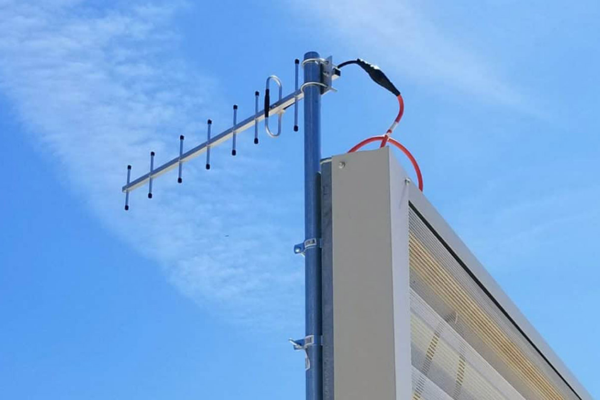The service providers can increase the wireless coverage inside out by installing distributed antenna systems as a communication medium. It might be anyplace, including a big structure, a stadium, etc. DAS spreads the signals around the building and amplifies them. Thus, enhancing the level of internet connectivity. It makes use of signal boosters for mobile phones which combine several small antennas to amplify the signal.
In simple terms, many businesses or individuals working from the home struggle with the restricted or interrupted network coverage. For such a specific reason, the DAS comes as the ideal solution. A building with poor cellular connectivity can benefit and bring numerous other benefits.
In this write-up, we will discuss the reasons and advantages of investing in DAS.
Distributed Antenna System Overview
A distributed antenna system is considered ideal for delivering reliable and strong radio coverage. Also, it ensures wireless connectivity in most complex situations. It is an alternative to a single antenna with a small coverage area, energy-consuming, and weak signal transmission.
DAS has been in use for a long time now. But, its expanded wireless capability, improved signal reception, and transmission in remote areas have increased its demand.
Where Distributed Antenna Systems Are Essential?
The need for emergency communication can occur anytime like fire prevention, natural disaster happening, etc. Here, the distributed antenna systems come as the ideal solution to ensure the person in need remains in touch via radio communication throughout the building.
There have been many events that depicted the importance of reliable radio coverage. These days, mandatory building codes are made. These include rules and regulations to be followed for building constructions and ensure uninterrupted communication.
Also, the guidelines state that existing buildings need to update to wireless systems and replace as much as possible wiring. Some of the essential locations that require DAS installation are high-rise buildings, traffic tunnels, airports, parking areas, sports arenas, and more.
How Does DAS Work?
The Distributed Antenna System makes use of both small and interior antennas inside the structure. It sends and receives cell phone signals. To enable simple contact with the local cell phone towers, these internal antennas are further coupled to the external ones.
It is vital that no one's mobile device has to relay the signal via construction debris and cause interference, leading to dropped calls. Dead signal areas not only hinder productivity but also the ability to contact for help in an emergency. Interference can easily be avoided by sending cell signals through a repeater system. As a result, everyone—including clients, visitors, and employees—can communicate effectively.
Reasons to Install Distributed Antenna Systems
Guarantees Strong Signal Strength
Everyone on the property can benefit from stronger signals thanks to distributed antenna systems. It includes all interior and outdoor commercial spaces. Thus, ensuring the visitors and employees do not have to worry about searching for spots for better call reception, voice quality, etc.
Cellular Connectivity is Improved
The elimination of dead zones within a structure is another excellent advantage of using cellular DAS. Distributed Antenna System ensures that staff can connect remotely with clients or other team members or collaborate internally with one another with ease.
Boosts Emergency Communication
Anyone accessing a business's property must have a way to call emergency services. No matter if there is a fire risk, a robbery occurrence, or whatever else. The DAS technology ensures that everyone can readily link their site to the emergency responders, including employees, clients, and visitors. The voice quality and phone reception have improved. Receiving the instructions is therefore made simple by the likelihood of a successful rescue.
Augmented Wi-Fi Internet Connectivity
Wi-Fi is a popular convenience offered by many buildings. When a user tries to connect to their network, the majority of them, however, encounter bandwidth restrictions. Keep in mind that Wi-Fi is an open spectrum that enables several users to connect and utilize the resources.
The capacity and coverage are increased with the installation of DAS. Thus, lowering the Wi-Fi load in the process. Yes, DAS has a certain amount of bandwidth. Each user does, however, have a channel to access the network. When opposed to Wi-Fi connectivity problems brought on by overcapacity, it offers a better experience.
Adheres to Rules and Regulations
Public safety is frequently taken into consideration while designing regulations by corporations like the National Fire Protection Association. For instance, a mass notification system is used to notify about the event of a weather emergency, a nuclear emergency, or any other hazard. The best option in this situation is to use a cellular DAS. It is helpful in buildings, which could have dead spots.
Conclusion
DAS installation is essential. After all, it helps to maximize the mobile reception within the building with enormous signal receivers at the same time. Thus, eliminating any dead spots without causing any inconvenience to the end users. With this comes the need to pick the ideal DAS provider. The professionals will install it for you in addition to ensuring greater network coverage and signal strength.
Keep in mind a few fundamentals when choosing DAS installation services. Check to see if the quote is based on the premise's square footage. Additionally, pay close attention to the structure's layout, typical occupancy, and any unique company requirements.



.png)




.png)


.png)


0 Comments